If you already got a sourdough starter or followed our guide on how to create a sourdough starter the next step is to learn how to maintain a sourdough starter.
You have to imagine that your sourdough starter is a little living creature that needs to be kept alive – I hope you already gave it a nice name ;). You keep it alive by feeding it with new flour and water. The nutrients in the flour and water serve as food. But with all good food the time comes when everything is eaten up, hunger strikes again and you have to serve new food.
Temperature is also an important factor to consider. The warmer it is, the hungrier your sourdough starter will get and eat all the nutrients faster. For example after the feeding process. If you would keep your sourdough starter in a warm place of about 25°C (77°F) it would eat all nutrients in under 2 days and you would have to feed it again. But there is a trick. You can slow that process down by putting it in the fridge. This way it will be more in a sleeping state and eat much slower. Hence you will be able to extend the feeding cycle from about every 2 days to between 7 to 14 days.
Also with each feeding cycle your sourdough starter will get stronger. The amount of growth will get higher, timing of rise and fall will be more consistent and your sourdough based goods will taste better and better. There are people that keep their sourdough starter alive for generations and pass it on to their children. It can also be a nice gift for friends if they like to bake.
Needed Tools And Ingredients
Tools
| Tool | Info |
| Scale |
|
| Non-reactive container |
|
| Spatula / Spoon |
|
| Thermometer |
|
| Rubber band (optional) |
|
Here you can check our recommended baking tools.
Ingredients
| Ingredient | Info |
| Sourdough starter |
|
| Flour |
|
| Water |
|
How-to
I used my sourdough starter made of pumpernickel flour and feeded it with the same flour type in this guide.
Process
- Take out 10 g from your sourdough starter and put it in a new canning jar
- Add (feed) it with 50 g flour and 50 g water at 20-22°C (68 to 71,6°F)
- Stir everything together thoroughly and make sure that there is no dry flour anywhere
- Seal the container
- Put it in a warm place at 20-22°C (68 to 71,6°F)
- Let it ferment for 8 to 15 hours
- After fermentation store it in the fridge
Timelapse
09:00 am
Just after the sourdough starter, flour and water was mixed together.
08:00 PM
We reached the maximum growth of about 200% after 11 hours. You can see that we are at the end of the feeding process as the sourdough starter starts falling and the bubbles get smaller.
Video
A short time lapse video on how the sourdough starter developed during the whole process of 11 hours.
FAQ
How Do I Know That The Feeding Process Has Finished?
- The feeding process has finished when the sourdough starter reached its maximum rise and starts to fall
- If you store the sourdough starter at 20-22°C (68 to 71,6°F) it should be in the range of 8 to 15 hours as mentioned
- You could cut down on the fermentation time by storing it at a higher temperature but it should not go above 30°C (86°F) and you will need to keep a good eye on it when it starts to fall
Why Do I Have To Feed My Sourdough Starter Every 7 to 14 Days?
- After you have created your very first sourdough starter of about 100 g and stored it in the fridge, it starts to eat the nutrients in the flour you fed to it
- After about 7 to 14 days all the nutrients are eaten up and your sourdough starter becomes hungry so it needs to be fed again
- If you wouldn’t feed it, it would just starve 🙁
What Are Indicators That My Sourdough Starter Needs To Be Fed Again?
- When it collapsed completely back or even below the point you intially fed it (here comes a rubber band in handy as a marker)
- When there are pretty much no bubbles left
- These are the two main indicators that your sourdough starter is hungry again
- I personally feed my starter every 7 days on a Sunday no matter the indicators
Why Do I Only Need 10 g Of My Sourdough Starter?
- We stay with the analogy that your sourdough starter is a little living creature
- The smaller the sourdough starter, the less you need to feed it
- The ratio of sourdough starter to needed flour and water to have enough nutrients for 7 to 14 days is 1:5
- So for example if you only take out 10 g of sourdough starter, you will only need 50 g of flour and 50 g of water so it has enough food for 7 to 14 days
- Imagine you haven’t baked for one or two weeks and your sourdough starter of about 100 g needs to be fed
- If you would take all of it, you would need to feed it 500 g flour and 500 g water to keep it alive before the next feeding
- That is a huge amount and as a hobby baker it is very unlikely that you will bake that much
- For me personally the 110 g of sourdough starter are more than enough to bake 3 to 4 sourdough breads and some rolls each week
- Of course if you want to bake more you can feed and keep more sourdough starter

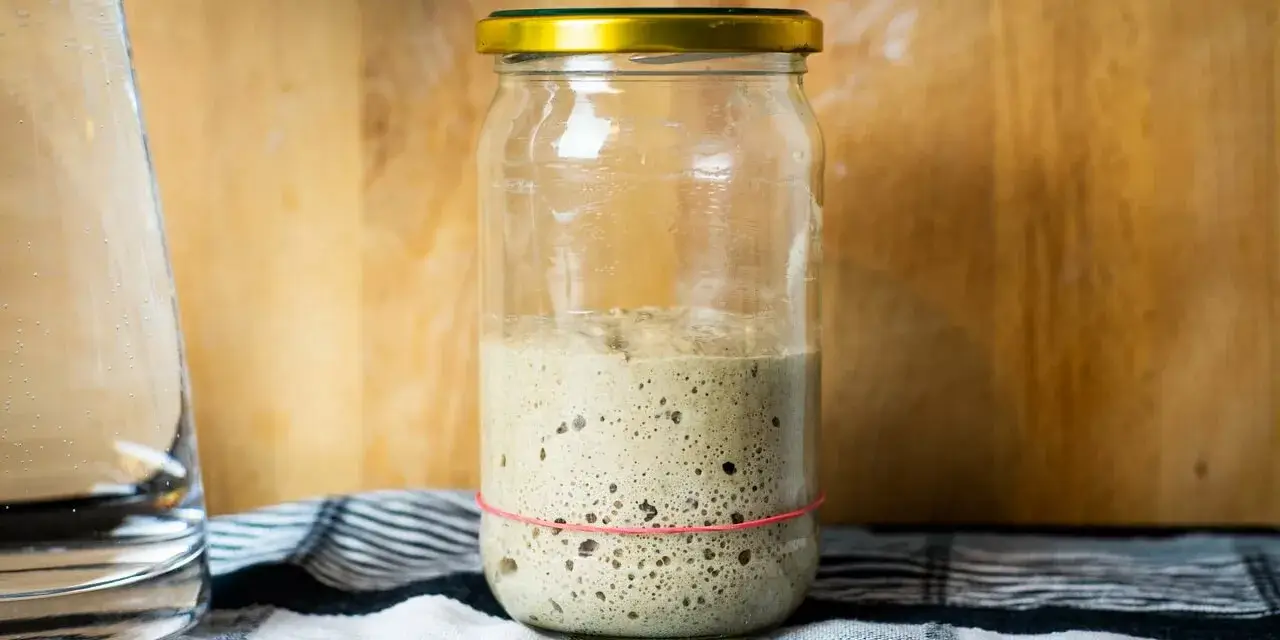
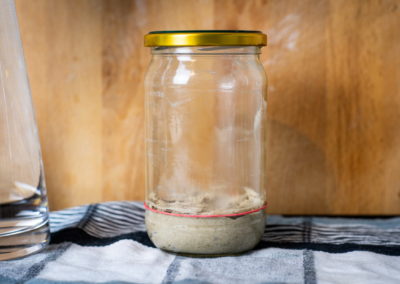
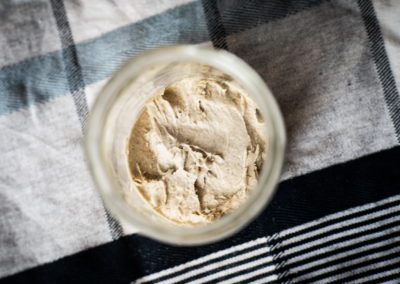
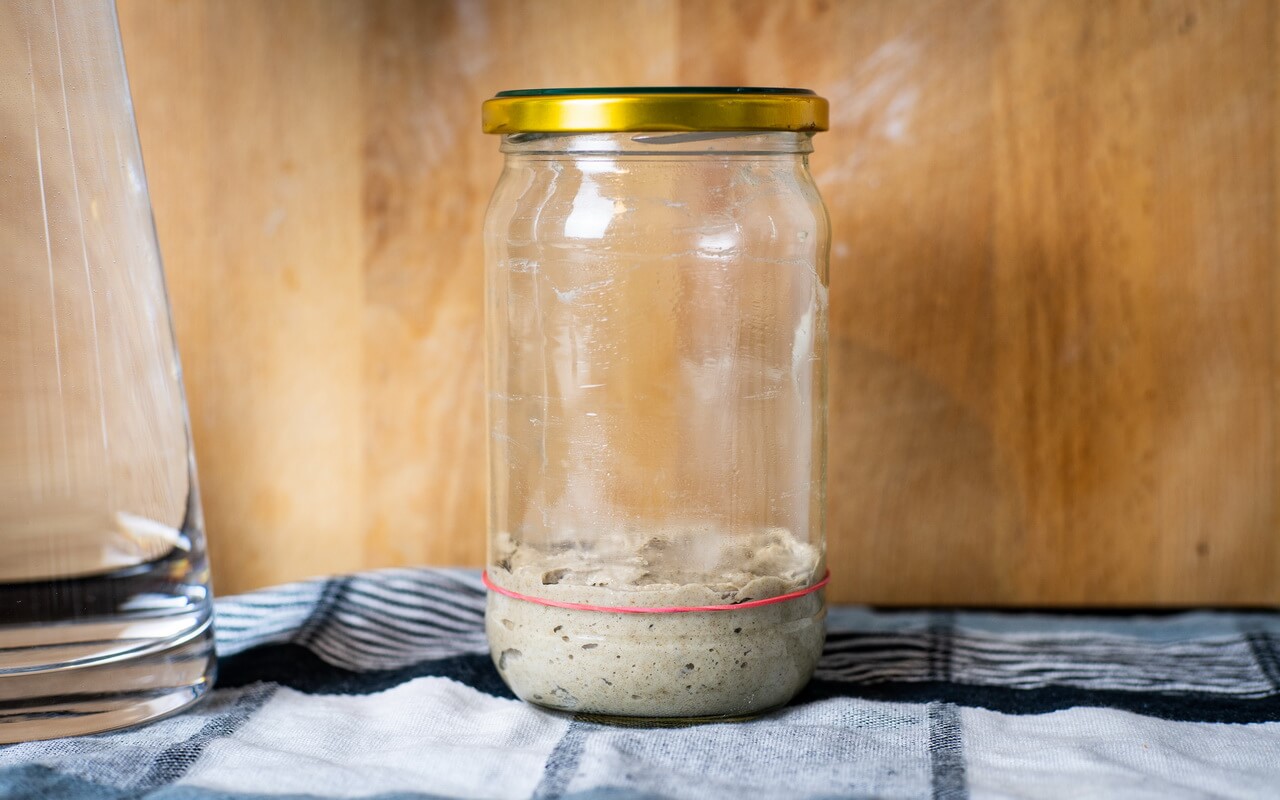


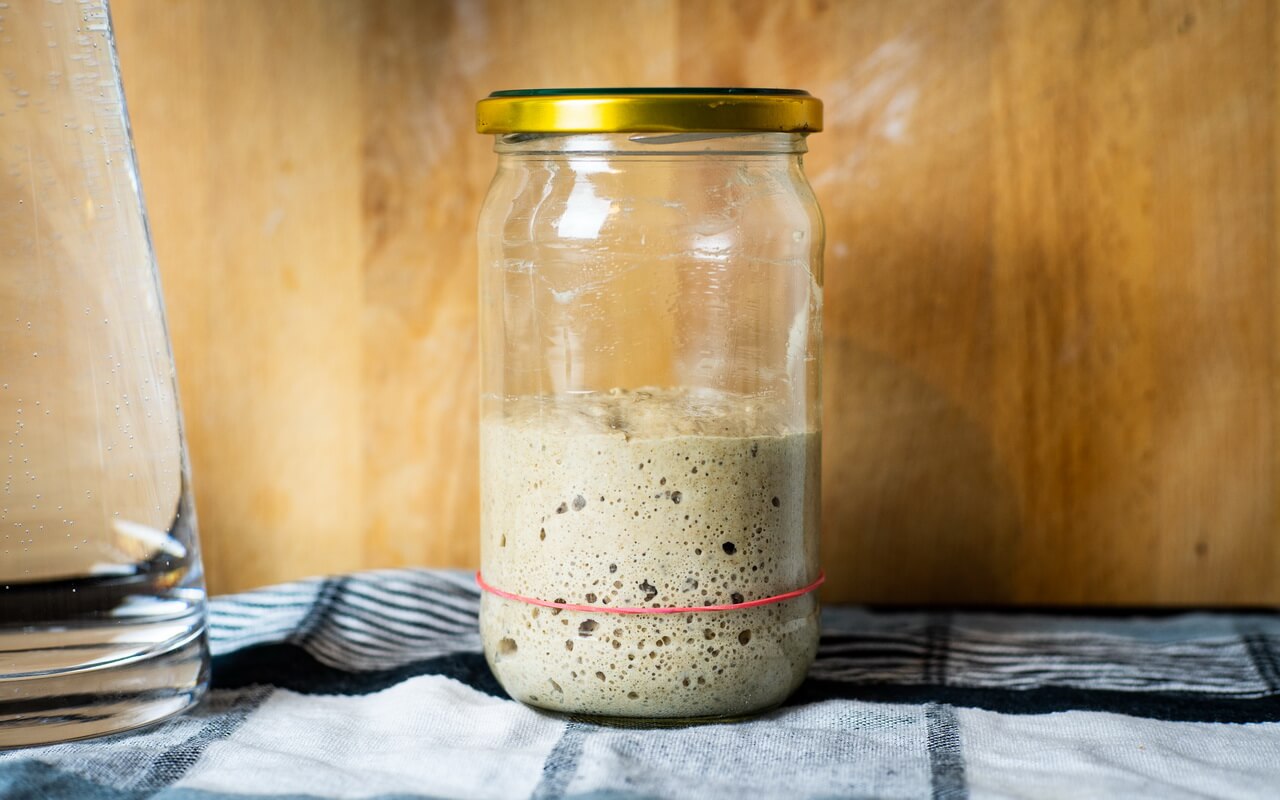
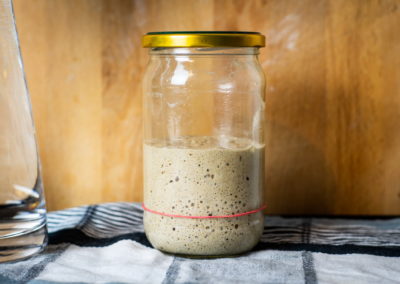
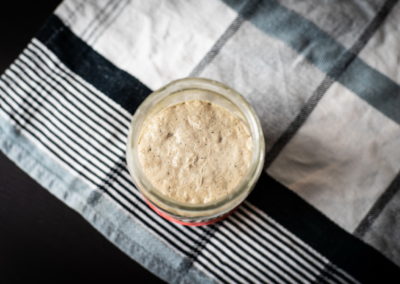
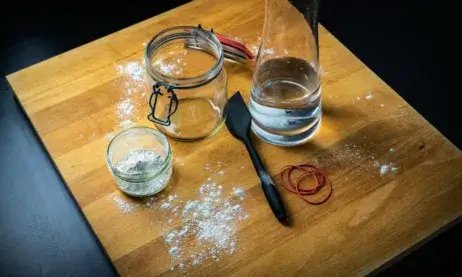

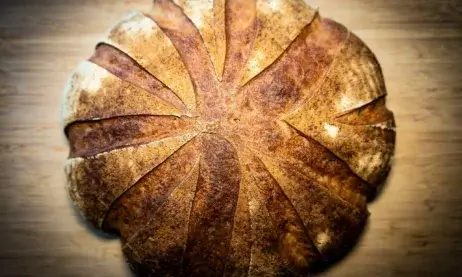

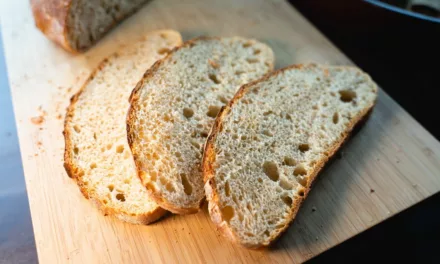
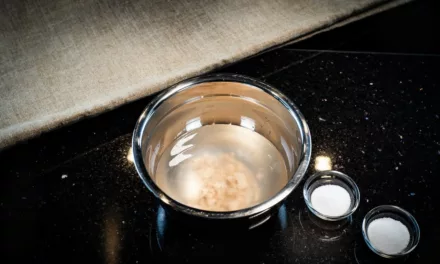
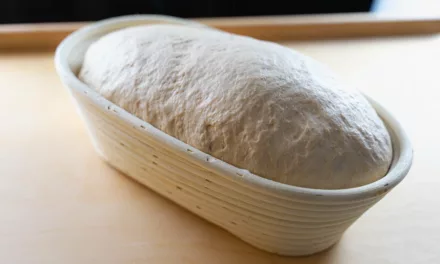
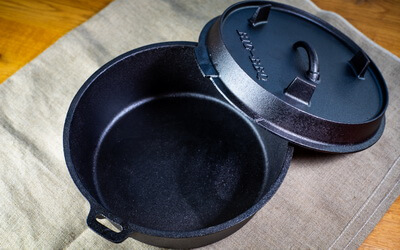
My sourdough starter has a fruity smell, am I not feeding it enough? I am about 21/2 weeks old. Should it be thrown out and restarted?